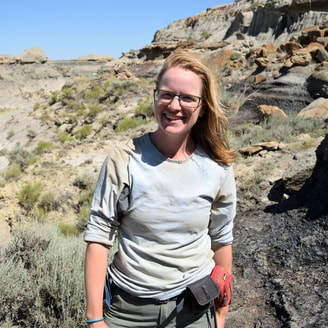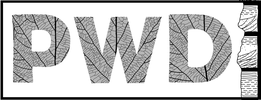I am the Paleobotany Collections and Lab Manager at the Burke Museum of Natural History and Culture in Seattle, WA. I manage over 75,000 plant fossil specimens including macrofossils (i.e., leaves, fruits, wood) and microfossils (i.e., pollen and phytoliths) as well as modern reference collections. This means that I am responsible for the physical organization and care of fossil specimens as well as the digital resources and database needs of the collection. I also manage the safety, protocols, and chemical inventories of the paleobotany laboratory spaces at the Burke Museum. In my job, I love engaging with the public and students through public programs, outreach events, teaching, and mentorship.
I received my bachelor's degree with a double major in Earth Sciences and Biological Sciences from Dartmouth College in 2014. I received my PhD from the Earth and Space Sciences Department of the University of Washington (UW) in Seattle in 2021. My dissertation work was under Drs. Caroline Strömberg and Greg Wilson Mantilla studying plant fossils from the Cretaceous-Paleogene boundary in northeastern Montana. I study macrofossils from the Hell Creek and Fort Union Formations for both taxonomic as well as ecological and climate data. I utilize leaf physiognomic methods to estimate paleoclimate across this interval and to interpret the ecology of these ancient plant taxa. I also collaborate with vertebrate and invertebrate paleontologists to understand how communities changed through time and the response of terrestrial ecosystems during the Cretaceous-Paleogene mass extinction event. I was awarded the Earth and Space Sciences Department's Johnson Award for Research Excellence in 2020.
I am passionate about outreach and science communication. I spend most quarters working as a Teaching Assistant in the Earth and Space Sciences Department at UW where I collaborate with faculty on lesson development and curriculum planning. I have served as an instructor, organizer, and curriculum developer for the Discoveries in Geosciences (DIG) Field School and the Girls In Science programs at the Burke Museum of Natural History and Culture. I also served as the coordinator of our Earth and Space Sciences departmental K-12 outreach program Rockin' Out for two years. As a researcher at the Burke Museum I acknowledge that our museum and the University of Washington stand on the lands of the Coast Salish Peoples, whose ancestors resided here since time immemorial. Many indigenous people thrive in this place--alive and strong.
As an early career scientist I also feel it is my duty to foster a welcoming, diverse, inclusive, and equitable space within my community. As such, I have served on the coordinating committee of the Midcontinent Paleobotanical Colloquium in 2020 and 2021 and have been involved in justice, equity, diversity, and inclusion (JEDI) efforts within my department and beyond (e.g., the URGE program, Girls In Science). Increasing diversity in the geosciences and paleontology is an ongoing effort, built by actions taken in each sphere of our broader research community. I acknowledge and thank the tireless efforts of researchers before me to push the boundaries of our scientific community.


